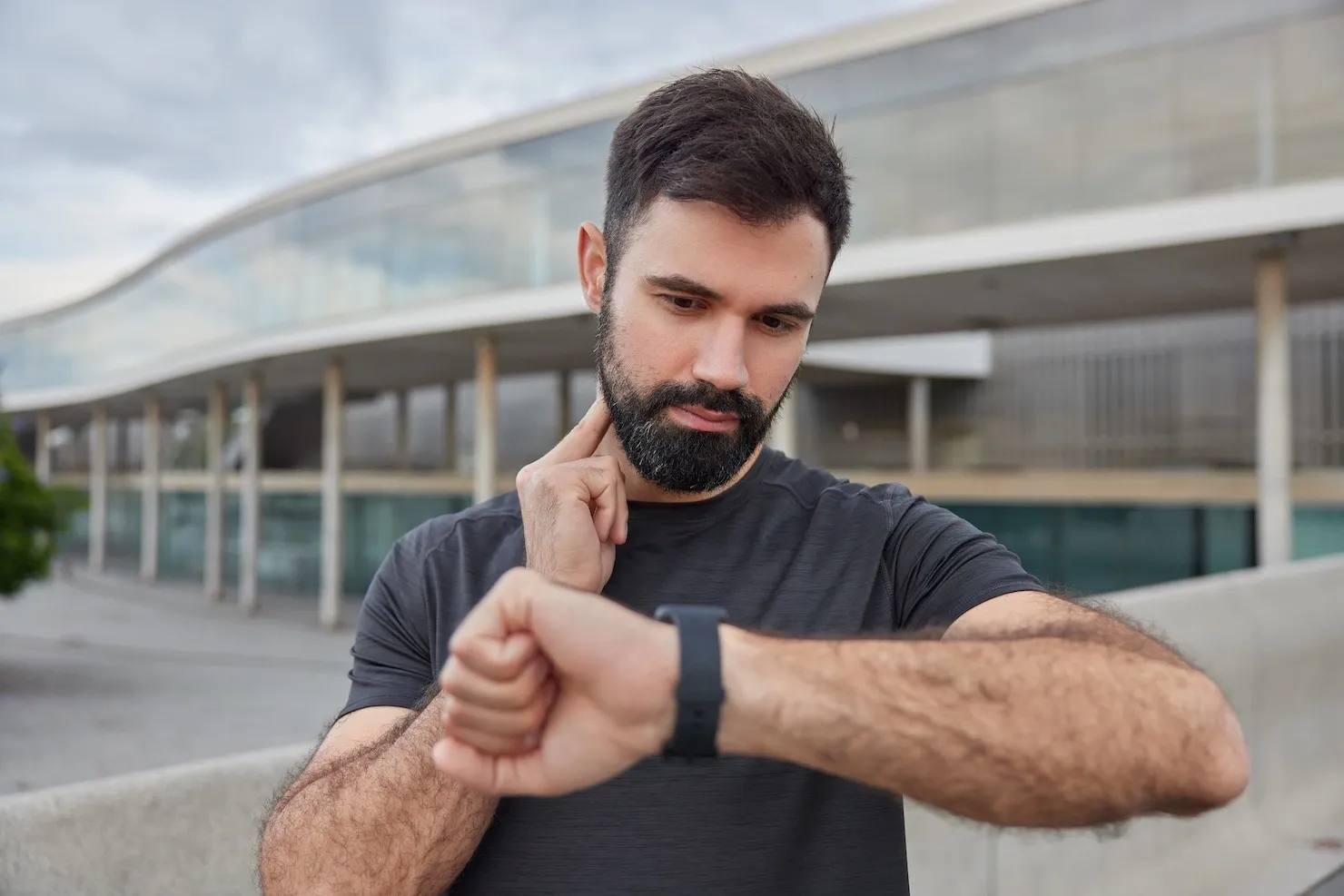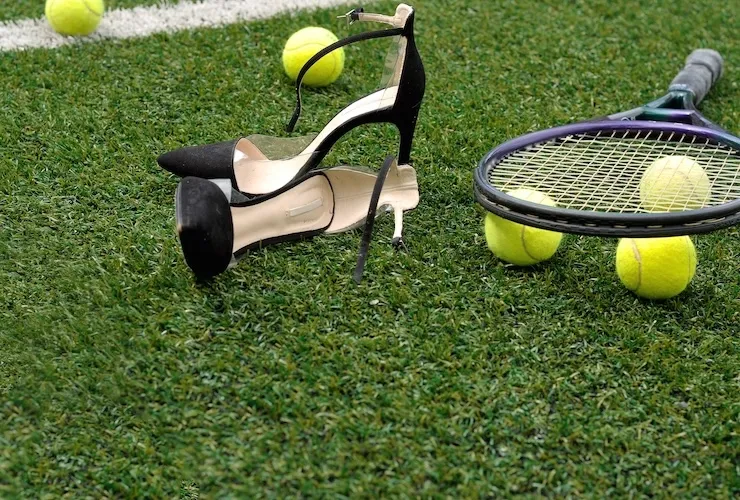Are you confused about the difference between training shoes and running shoes? You're not alone. With so many market options, choosing the right type of shoe can be overwhelming. This article will help clear up the confusion and guide you in making the best decision for your fitness needs.
Key Takeaways:
- Training shoes are designed for various movements and activities while running shoes are specifically designed for running.
- The key differences between training and running shoes include design and construction, cushioning and support, flexibility and traction, and weight and durability.
- When choosing shoes, consider the type of workout you will be doing, such as strength training, HIIT, cross-training, long-distance running, or sprinting, to determine which shoe best suits your needs.
What Are Training Shoes?
Training shoes are a crucial piece of athletic footwear designed to provide support, stability, and comfort during various physical activities.
Different training shoes are available in the market, suitable for various workouts, terrains, foot forms, and individual preferences.
They offer tailored features and materials to better fit specific use cases.
What Are The Types Of Training Shoes?
When it comes to athletic shoes, there are various types suitable for different activities:
- Gym shoes: Ideal for indoor workouts and light exercise, offering support and stability.
- Walking shoes: Specifically designed for walking, providing comfort and cushioning for long distances.
- Tennis shoes: Tailored for tennis, featuring durable materials and lateral support.
- Cross-trainers: Versatile sport-specific shoes suitable for multiple activities, offering stability and cushioning.
- Stability running shoes: Intended for overpronators, providing support and cushioning for running.
- Trail running shoes: Built with aggressive tread for off-road running, offering stability and protection.
- Minimalist shoes: Lightweight and flexible, promoting natural foot movement and agility.
- Cushioned shoes: Providing ample cushioning and shock absorption, ensuring comfort during high-impact activities.
What Are Running Shoes?
When finding the perfect pair of shoes for your running needs, understanding the different types of running shoes is essential. Running shoes, also known as athletic shoes, vary in design and features to cater to different types of runners. From trail running shoes to minimalist shoes and even carbon fiber running shoes, each type offers unique benefits to enhance your running experience. In this section, we will explore the various types of running shoes and the key features that make them suitable for specific running styles.
What Are The Types Of Running Shoes?
Running shoes come in various types to cater to different running needs:
- Athletic shoes: Suitable for casual runners, providing basic cushioning and support.
- Trail running shoes: Designed with sturdy soles and protective features for off-road running.
- Minimalist shoes: Lightweight with minimal cushioning, promoting natural foot movement.
- Maximalist running shoes: Featuring extra cushioning for enhanced shock absorption.
- Carbon fiber running shoes: Incorporating a carbon fiber plate for energy return and enhanced propulsion.
What Are The Key Differences Between Training Shoes And Running Shoes?
When it comes to athletic footwear, there are many different options available for various activities. Two popular choices are training shoes and running shoes. While they may seem similar, critical differences can significantly impact your performance and comfort. In this section, we will explore these differences in detail. From design and construction to cushioning and support, flexibility and traction, and weight and durability, we will break down each type of shoe's unique features and functionalities. So, let's dive in and discover the essential distinctions between training shoes and running shoes.
1. Design And Construction
- Design and Construction: Training shoes have lateral support to accommodate multidirectional movements, making them ideal for dynamic movements like side lunges, plyometrics, and agility drills.
- Types of Movement: These shoes are like Swiss army knives, adapting to changing demands and multidirectional movements, offering stability for lateral and side-to-side movements.
2. Cushioning And Support
- Proper cushioning: Look for shoes with adequate cushioning to absorb shock and reduce impact on joints during workouts.
- Energy return: Opt for training shoes with responsive midsoles for improved energy return during high-intensity activities.
- Durable uppers: Choose shoes with durable and breathable mesh uppers to maintain foot comfort and support during various movements.
- Extra cushioning: Some training shoes offer plush cushioning in specific areas to provide additional comfort and support for targeted movements.
3. Flexibility And Traction
- Flexibility: Look for training shoes with a flexible midsole to support multidirectional movements during circuit training or agility drills.
- Traction: Opt for a thicker midsole and outsole with enhanced grip to cater to the changing demands of various training surfaces.
The concept of specialized training and running shoes evolved to address the distinct biomechanical requirements of circuit training. This led to the development of shoes with features tailored to this specific workout.
4. Weight And Durability
- Weight: Look for lightweight shoes to reduce fatigue during workouts with heavy weights or bodyweight exercises.
- Durability: Opt for shoes made of durable materials like nylon or rubber for longevity, especially for weight training or activities with heavier weight impact.
Fact: Lightweight training shoes can improve agility and speed during high-intensity workouts.
Which One Should You Choose For Different Types Of Workouts?
Having an appropriate type of shoes can make all the difference in workouts. But with so many options on the market, choosing between training shoes and running shoes can be overwhelming. To help you make an informed decision, we will discuss the differences between these two types of shoes and which is best suited for specific workouts. From strength training and high-intensity interval training to cross-training, long-distance running, and sprinting, we will explore each shoe's unique features and benefits for different types of exercises.
#1 Strength Training
When participating in strength training, keep in mind:
- Focus on Stability: Consider using weightlifting shoes to maintain a stable base while performing lifting exercises with heavy weights.
- Explosive Movements: For quick bursts of energy during lifting exercises, prioritize shoes with firm support and a secure grip.
In the early 20th century, weightlifting shoes became popular among athletes as they realized the importance of specialized footwear for enhancing performance while performing lifting exercises.
#2 High-Intensity Interval Training
- Choose shoes with responsive cushioning for high-intensity interval training (HIIT) to ensure energy return during intense workouts.
- Opt for shoes with excellent traction for sprinting drills and Changing Directions to prevent slippage and enhance performance.
When selecting shoes for high-intensity interval training, prioritize cushioning for energy return and traction for agility during sprinting and Changing Directions.
#3 Cross-Training
- Select cross-training shoes adaptable to changing demands, providing ample support for back squats and sufficient cushioning for agility movements.
- Look for shoes with durable outsoles and flexible uppers to accommodate the diverse exercises and movements involved in cross-training sessions.
- Choose shoes with solid lateral support to assist with the side-to-side movements often incorporated in cross-training workouts.
#4 Long Distance Running
- Choose shoes designed explicitly for long-distance running to endure hundreds of miles.
- Look for durable uppers that provide ample support and protection from impact.
- Opt for mesh uppers to enhance breathability and reduce the risk of blisters during long runs.
- Consider cushioning and responsiveness to maintain comfort and energy return over extended distances.
#5 Sprinting
- Choose lightweight shoes with responsive cushioning for sprinting.
- Look for shoes offering quick bursts of speed and lateral support for agility movements.
- Opt for designs with excellent flexibility and traction to support agility movements while sprinting.
Fact: Sprinting shoes ensure peak performance by propelling and stabilizing explosive movements.
Can You Use Training Shoes For Running And Vice Versa?
Although training and running shoes may appear similar, they serve different purposes. Running shoes are designed for forward motion and provide cushioning, making them ideal for running. On the other hand, training shoes offer lateral support and stability for various workouts, making them suitable for gym activities. Using training shoes for running can result in discomfort due to a lack of cushioning and support. Likewise, running shoes do not provide lateral stability for training movements. It is best to use each type of shoe for its intended purpose.
When selecting footwear, prioritize functionality over aesthetics. Consider your workout routine and choose appropriate shoes to prevent injuries and improve performance.
How To Choose The Right Shoes For Your Workout?
- How To Choose The Right Shoes For Your Workout?
- For running, determine your workout type and select shoes with cushioning and flexibility. For weightlifting, opt for flat-soled shoes for stability.
- Consider your foot arch: High arches need cushioning, while low arches require more support.
- Ensure a snug heel fit, enough toe room, and proper width to get the right fit.
- Test the shoes by walking or jogging in the store to assess comfort and performance.
- Remember to replace your shoes when necessary, as running shoes typically last about 300-500 miles, while training shoes may last longer based on usage.
What Are Training Shoes?
Training shoes, also known as cross-training shoes, are a type of athletic footwear designed to be versatile and able to handle various exercises and training surfaces. They are a hybrid of other athletic shoes suitable for various physical activities.
What are the primary differences between cross-training shoes and running shoes?
The main differences between cross-training shoes and running shoes include the flexibility of the sole, heel drop, and stack height. Cross-training shoes are stiffer, have lower heel-to-toe drop, and have thinner midsoles than running shoes. They support lateral movement and dynamic activities while running shoes are designed for repetitive motion, forward propulsion, and shock absorption.
When is it better to wear cross-training shoes vs running shoes?
It is better to wear cross-training shoes when performing various activities, such as weight lifting, agility training, and other movements requiring lateral and range of motion. Cross-training shoes provide stability and support for these exercises. In contrast, running shoes are better for track workouts and other forms of physical activity that involve forward motion and stress on the feet.
What is the risk of injury when wearing the wrong type of shoe for a specific workout?
Wearing the wrong type of shoe for a specific workout can increase the risk of injury, such as stress fractures and strains. For example, wearing cross-training shoes for running can result in improper cushioning and support, leading to stress fractures. Similarly, using running shoes for weight lifting can cause instability and lack of support, increasing the risk of strains and other injuries.
How do heel-toe drop and stack height affect the performance of training shoes vs running shoes?
Heel-toe drop and stack height play a crucial role in the performance of training shoes vs running shoes. A lower heel drop and higher stack height in cross-training shoes provide stability and support for various activities and movements. In comparison, a higher heel drop and lower stack height in running shoes offer cushioning and shock absorption for running and other physical activities that involve heavier weight bearing on the feet.
How do I choose the right shoe for my foot type and form of exercise?
Choosing the right type of shoe for your type of foot and form of exercise is crucial to prevent injuries and enhance performance. Consult an expert for a proper fit and analysis of your foot type and movement patterns. Additionally, consider the specific demands of your physical activity, such as lateral movement and range of motion, to determine whether cross-training or running shoes would be more suitable for your workouts.



